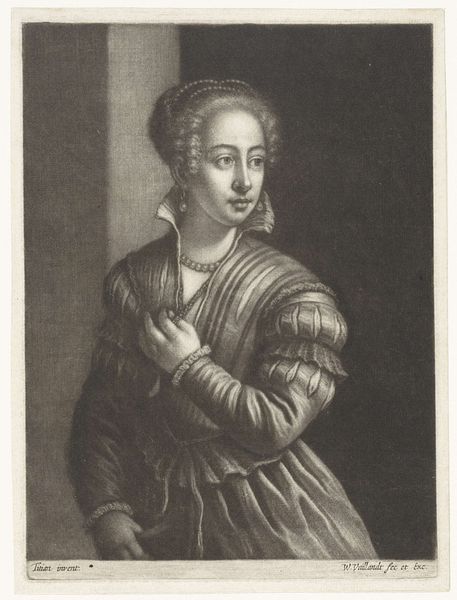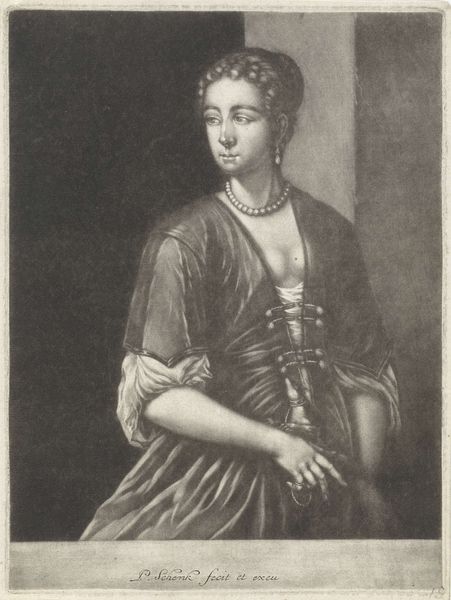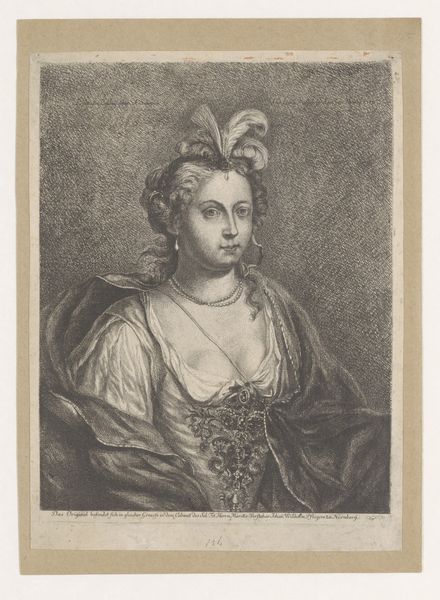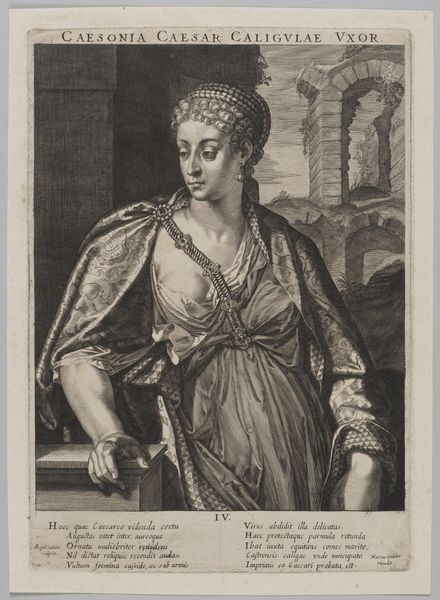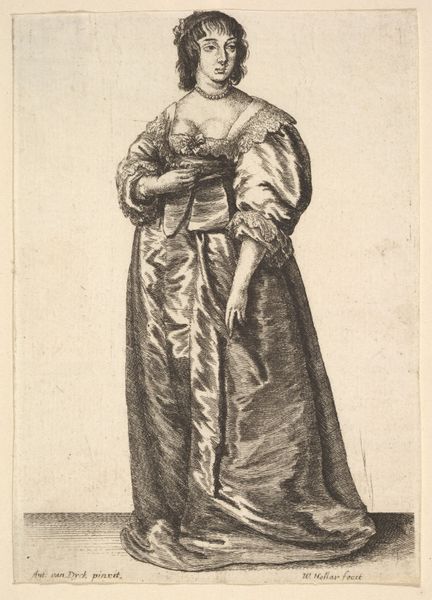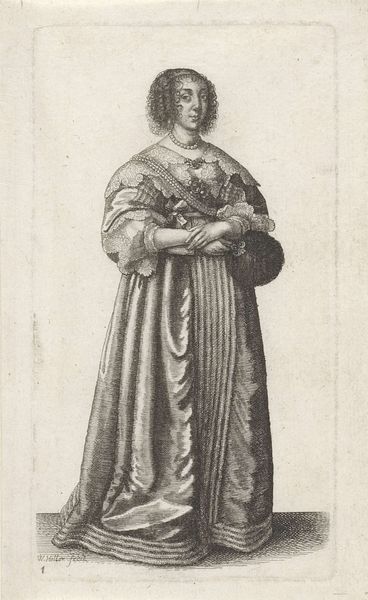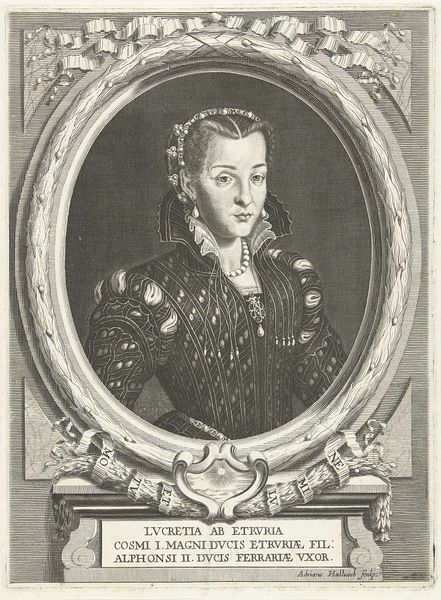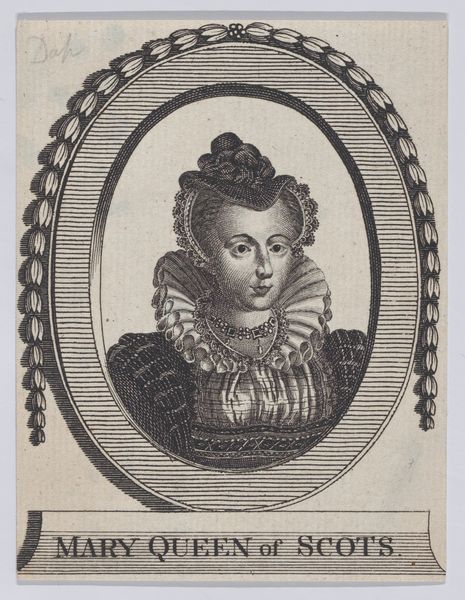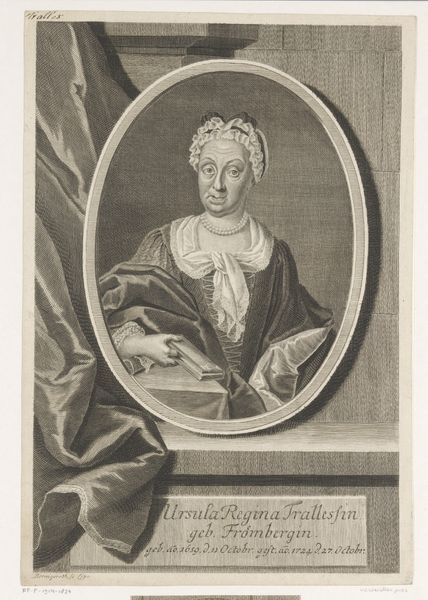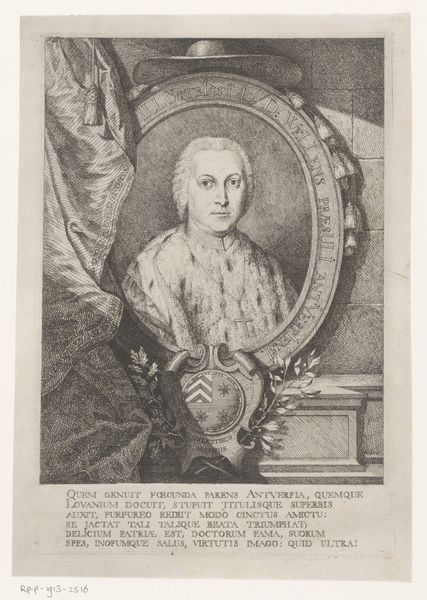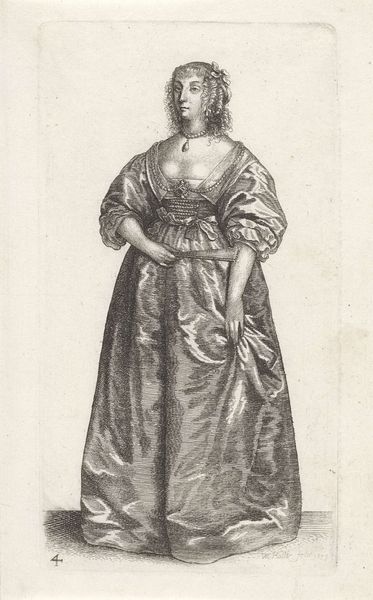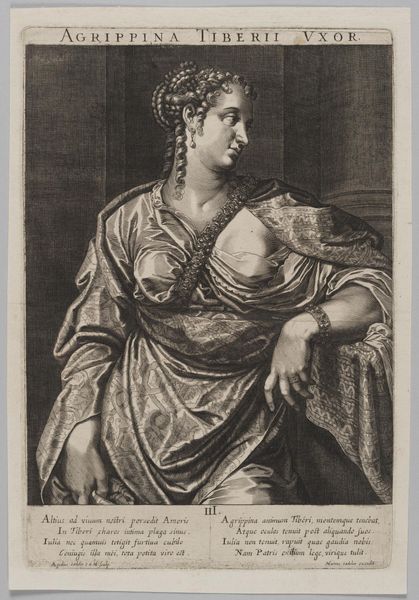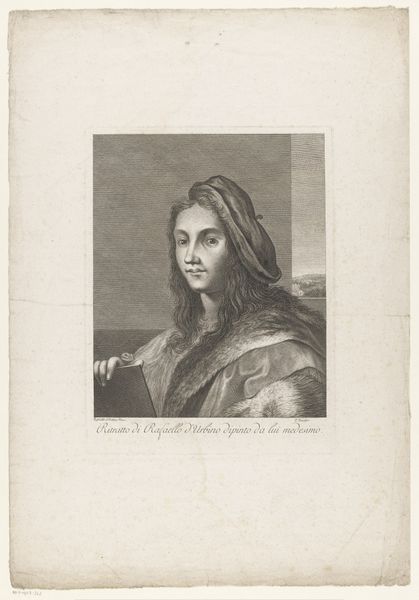
print, etching, engraving
#
portrait
#
baroque
# print
#
etching
#
charcoal drawing
#
engraving
Dimensions: height 193 mm, width 147 mm
Copyright: Rijks Museum: Open Domain
Curator: Before us, we have "Vrouw in Venetiaanse kleding," or "Woman in Venetian Dress," by Wallerant Vaillant, crafted between 1658 and 1677. The work, currently held at the Rijksmuseum, is a masterful example of Baroque portraiture executed through etching and engraving techniques. Editor: My initial impression is one of delicate somberness. The limited tonal range produces an introspective mood. I find the textural gradients, achieved through the printmaking process, surprisingly rich and sophisticated. Curator: Absolutely. Vaillant’s command of line and value creates a palpable sense of depth, particularly evident in the rendering of the Venetian dress. Note how the sharp, precise lines of the collar contrast against the softer gradations used to define the fabric's volume. This tension between precision and fluidity is what breathes life into the composition. Editor: And consider the socio-economic context: printed images democratized portraiture. While an oil painting would be the exclusive domain of the wealthy, a print like this offered access to a wider audience, influencing fashion and disseminating images of status and style. The production of such prints involved skilled labor and the commerce of reproducible art. Curator: That’s a vital point. It brings a nuanced appreciation to the semiotic construction of the subject, as this engraving presents status through replicated form. Editor: True. And look closer at how Vaillant utilizes cross-hatching and stippling to model the face, the careful gradations build form and light to emulate skin's texture with mere marks upon the plate, translated now onto the page. A mediation of representation itself. Curator: Furthermore, notice her gaze; it avoids direct engagement with the viewer, instead focusing just beyond us. It adds to the overall air of contemplative quietude. Editor: Examining its materiality underscores how printmaking was not just reproduction but creative invention. Vaillant could adjust his methods to translate hue, and inject his touch to this visual echo of the represented subject, for the marketplace. Curator: The formal aspects coalesce to establish a moment of serene, almost fragile beauty. It is through compositional balance and modulation of line weight that the artwork maintains its capacity to resonate even centuries later. Editor: Agreed. Bringing awareness to the process and distribution expands the portrait from individual likeness to an artifact representative of Baroque artistry, craftsmanship, and circulation.
Comments
No comments
Be the first to comment and join the conversation on the ultimate creative platform.
